When it comes to man’s best friend, not all dogs are created equal, especially in temperament. Some breeds come with a bold, intense personality that can tip into aggression if not carefully guided. The aggressive dog breeds aren’t born bad; they’re often the product of a powerful mix of instinct, breeding, and environment.
Throughout history, certain dogs have been selectively bred for protection, hunting, or herding roles that demand quick reactions and strong wills. When these traits are paired with poor training or a lack of socialization, trouble can follow. But don’t let the word “aggressive” fool you—these dogs can also be fiercely loyal, intelligent, and loving in the right hands.
In this blog, we’ll dig into 7 breeds that are known for their intensity and explore why they may pose a risk if misunderstood or mishandled. Whether you’re an experienced dog owner or just curious, understanding these breeds is essential for safe and responsible companionship.
Most Aggressive Dog Breeds
1. Akita
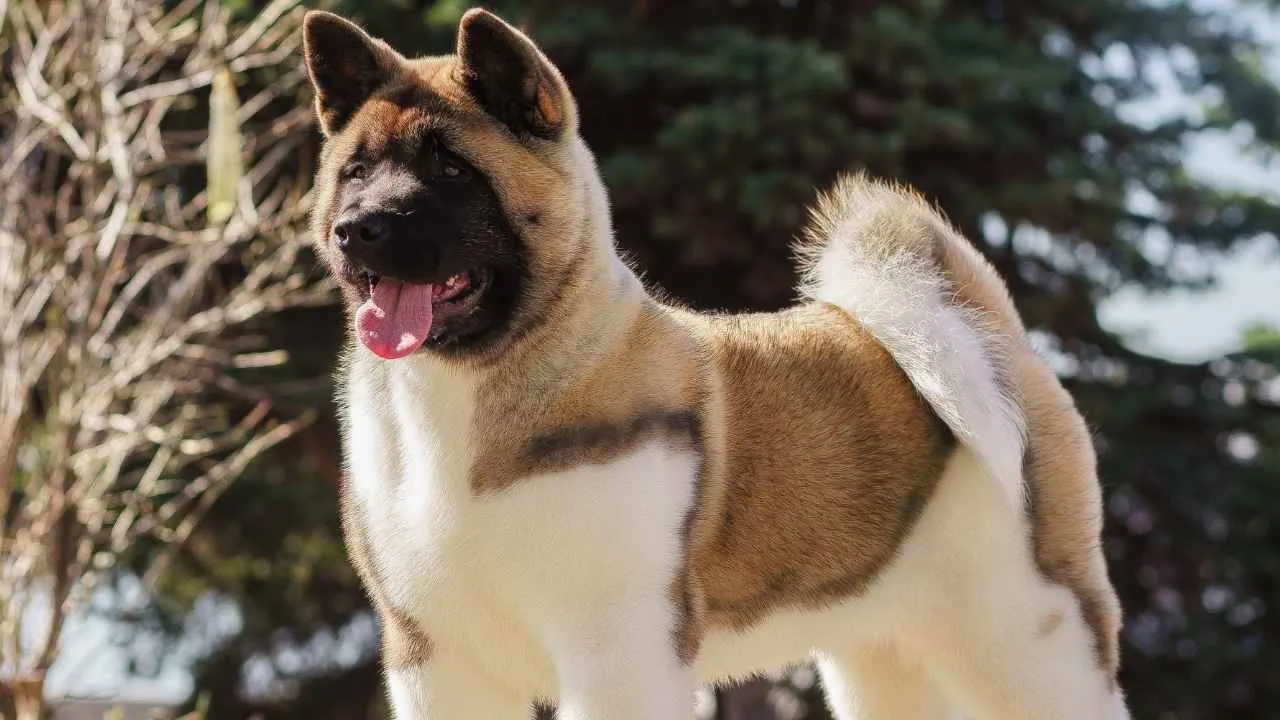
Akitas are a powerful and historically significant breed, originally bred in Feudal Japan to guard royalty and hunt large game-like bears and boars. This background contributes to their strong instincts and assertive nature, which can sometimes manifest as aggression, particularly toward strangers or other animals if not properly cared for.
AKC states their temperament is complex and highly influenced by their environment and socialization. While Akitas are often affectionate and playful with their families, they tend to be reserved or even hostile around unfamiliar people. Their strong-willed and independent personalities make them a challenging breed to own, especially for first-time owners.
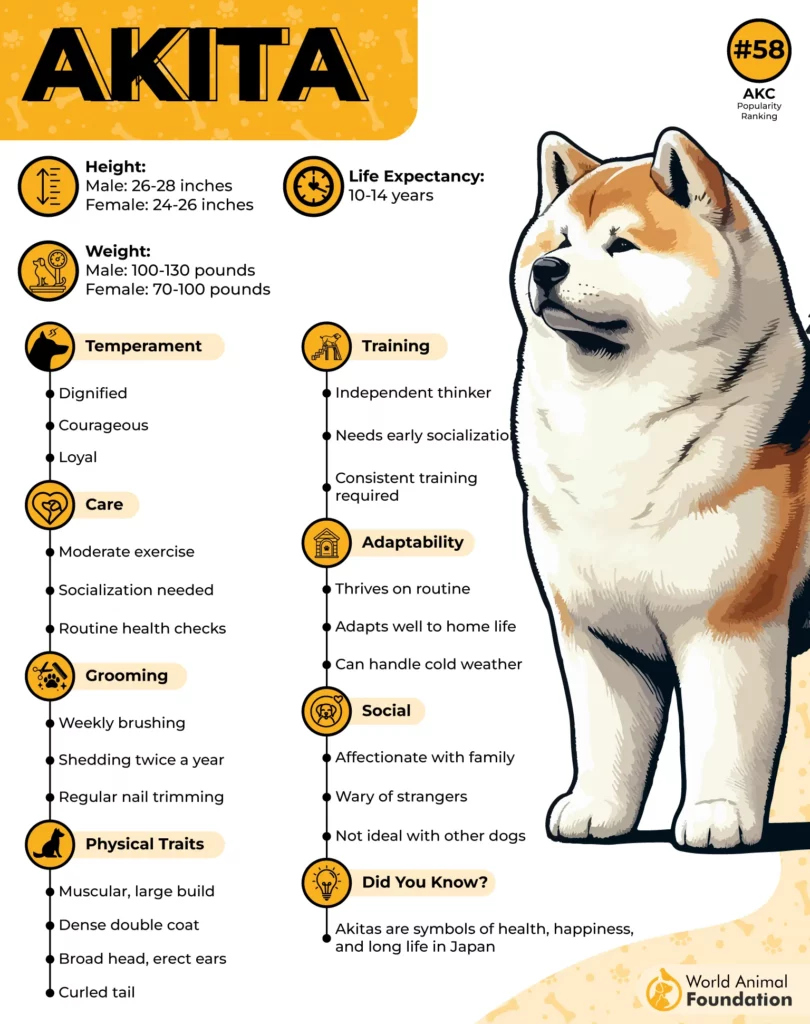
Adding to their intensity is their impressive physical strength. Akitas have one of the strongest bite forces among dog breeds, making it crucial to manage them responsibly.
Without proper training, even a seemingly harmless nip could cause injury, particularly to children or those unfamiliar with the breed’s nature.
Common Triggers of Akita Aggression
Predatory Instincts: Can be set off by small animals, joggers, or children.
Territorial Behavior: May show dominance, especially toward same-sex dogs.
Lack of Socialization: Leads to fear or distrust of strangers.
Mishandling: Staring into their eyes or using harsh punishment can be seen as threats.
Neglect or Mistreatment: Poor training or lack of affection often results in behavioral issues.
Pain or Illness: Discomfort can lead to sudden defensive aggression.
2. Cane Corso
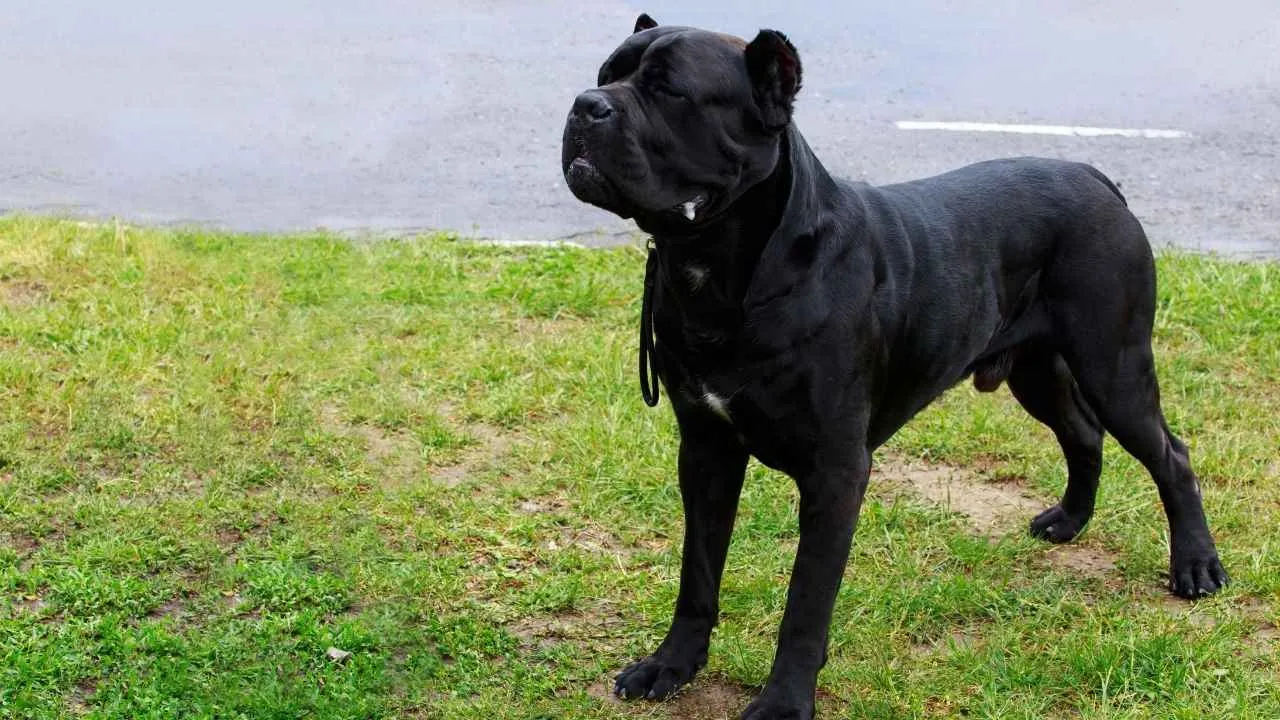
The Cane Corso is a powerful working breed that descends from ancient Molossus dogs, originally bred by the Molossi people of Greece for guarding purposes. After being brought to Italy by the Romans and crossbred with local dogs, the Cane Corso emerged as a formidable guardian and war dog, sharing ancestry with the Neapolitan Mastiff.
While not inherently aggressive, the Cane Corso has a natural instinct to protect. The Cane Corso is a breed that is known for its power and strength. With one of the strongest bite forces of 650 PSI, this breed can take down prey much larger than itself.
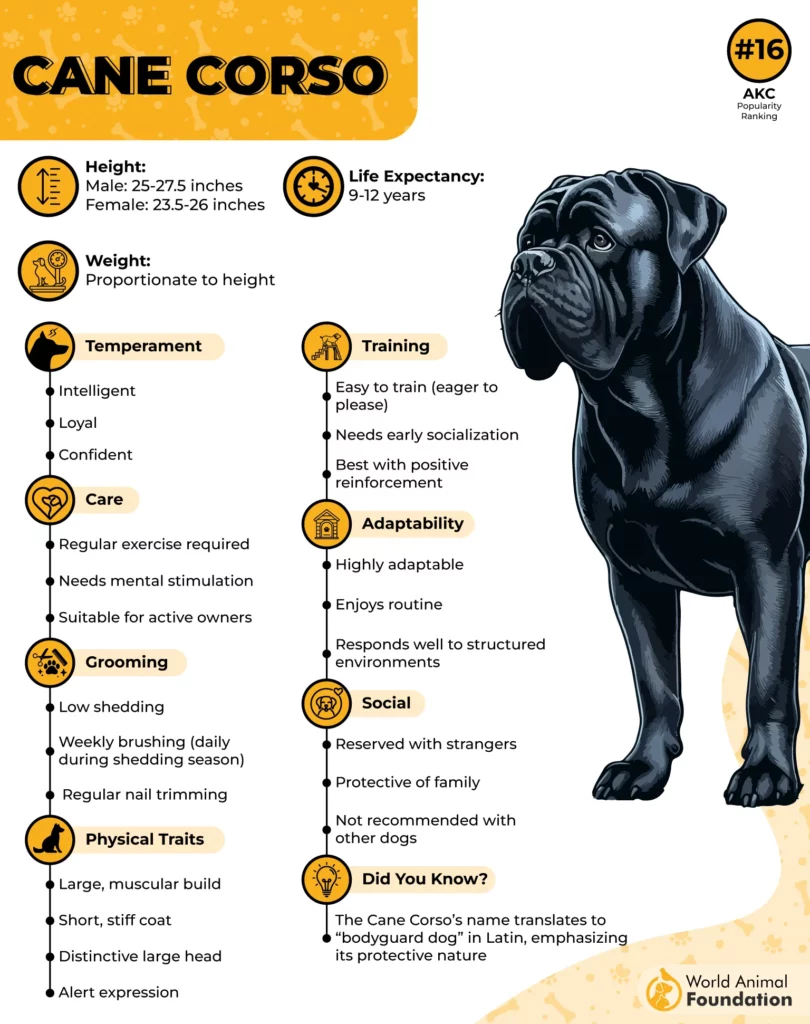
Without firm leadership and proper training, it may become overly territorial. A well-trained Cane Corso is loyal, obedient, and eager to please, but tends to remain wary of strangers and other animals.
This breed is known for its strength, independence, and serious nature. It is not ideal for households with small children, elderly individuals, or multiple dogs, especially of the same sex. With moderate energy levels and little interest in toys or fetching, the Cane Corso thrives best in a structured environment with experienced owners who can manage its assertive personality.
As noted by Britannica, Cane Corsos are naturally strong-willed and protective, but when their instincts go unchecked, they can display various forms of aggression. From guarding territory to reacting out of fear or frustration, their behavior often reflects a deeper cause. Knowing what fuels these outbursts is key to handling them responsibly.
Top Reasons Behind Cane Corso Aggression
Territorial Instincts: Fiercely protective of their home, they may see guests as intruders.
Overprotectiveness: Their loyalty can turn into aggression if they feel you’re threatened.
Resource Guarding: Toys, food bowls, or favorite spots can trigger possessive behavior.
Fear-Based Reactions: When scared and cornered, they may bite first, ask questions later.
Frustration Responses: Leashes, fences, or being confined can spark sudden aggression.
Hormonal Drives: Unneutered males may challenge others to assert dominance.
High Prey Drive: Small animals can awaken their ancestral hunting instincts.
3. Chihuahua
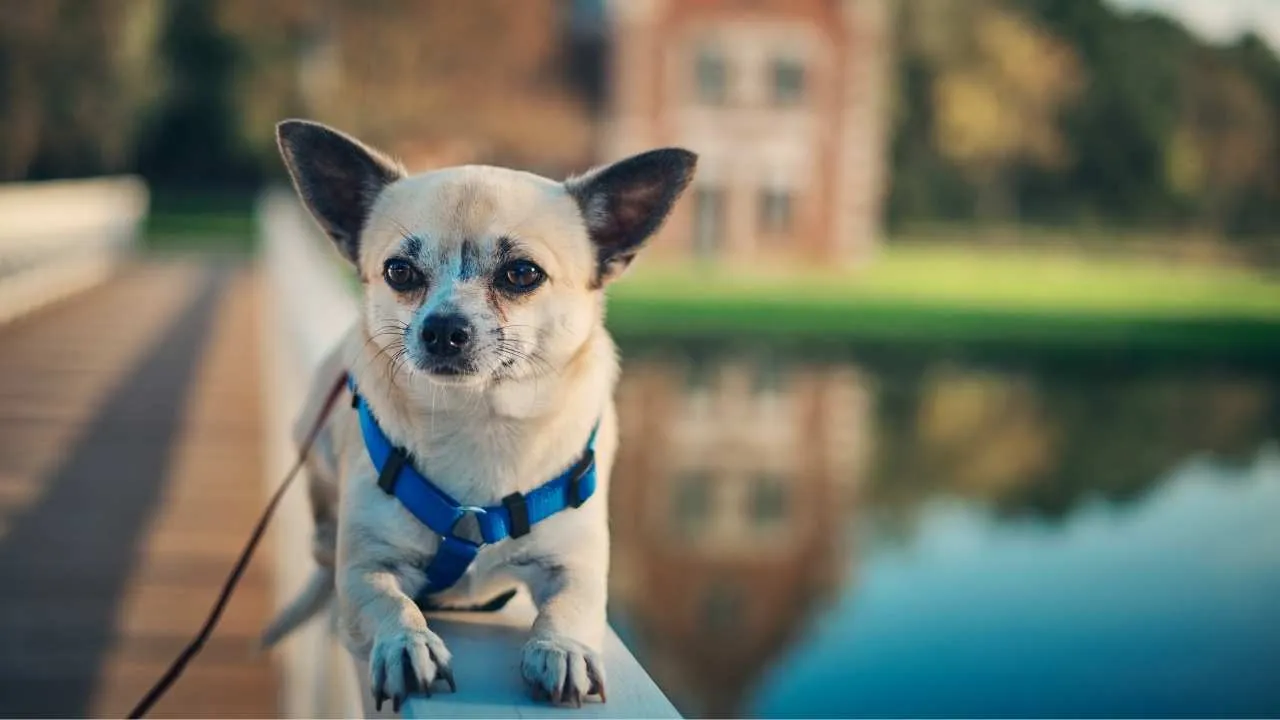
The Chihuahua is a small dog breed with a big personality, known for its boldness and feisty nature. Weighing no more than 6 pounds, this ancient breed from Mexico features a distinctive “apple” head.
While many Chihuahuas are confident and quick to challenge larger dogs, others can be timid and nervous, making them a mix of bold and jittery traits.
Chihuahuas may exhibit aggressive behavior due to a combination of genetic factors, fear, and environmental influences.
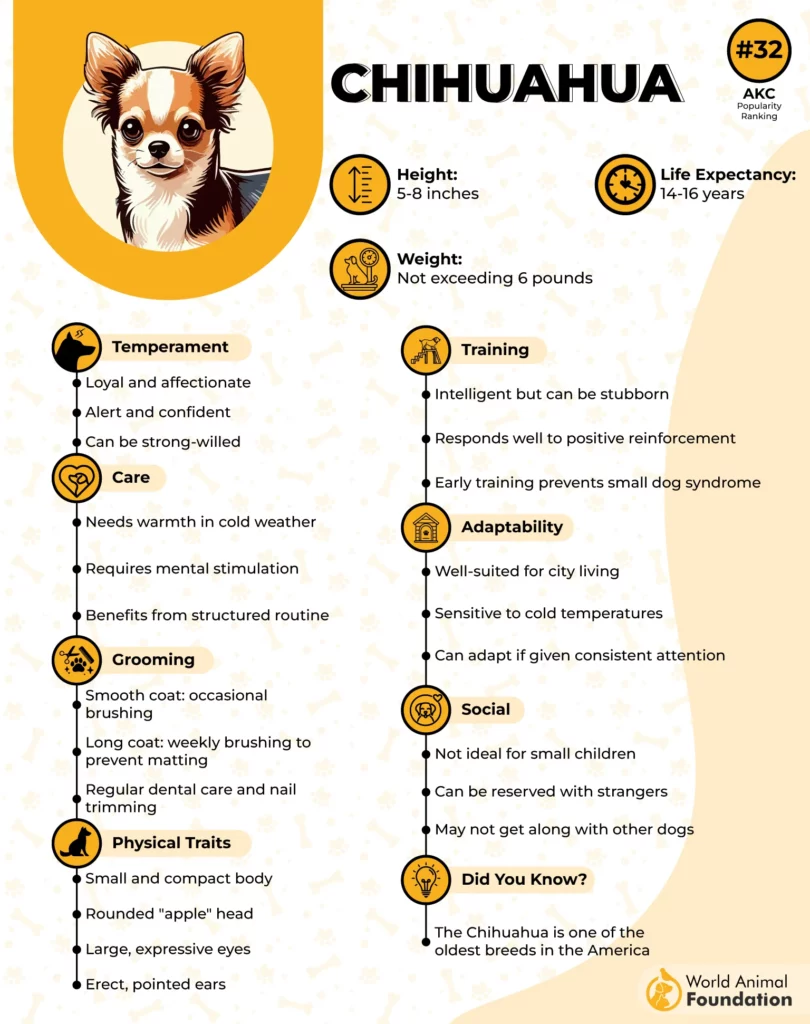
Studies suggest that Chihuahuas tend to display higher aggression levels compared to breeds like the American Pit Bull Terrier, largely due to their genetic heritage.
Key factors contributing to Chihuahua aggression include
Fear: Small size and low muscle density make Chihuahuas more prone to fear, which can trigger aggressive responses.
Resource Protection: Chihuahuas often show possessiveness over food, toys, or even their owner’s attention, leading to aggression when these resources feel threatened.
Lack of Socialization: Poor socialization, especially during critical developmental periods, can result in fear and difficulty interacting with others, increasing the likelihood of aggressive behavior.
Stress and Redirected Aggression: Stressful situations can build tension in Chihuahuas, leading to outbursts directed at people or animals, even if they are not the source of stress.
Health Issues: Illness or aging can make Chihuahuas more sensitive and prone to aggression, as they may not fully understand why they feel unwell and vulnerable.
Proper training, socialization, and healthcare are essential in managing and preventing aggressive tendencies in Chihuahuas.
Chihuahua Uprising: The Tiny Terror of Maryvale
In 2014, Maryvale, Arizona, was hit by a Chihuahua “uprising.” Packs of 8 to 12 Chihuahuas, caused by overpopulation, were reported roaming the streets, creating a stir and scaring residents with their yappy chaos. While the reports were exaggerated, these tiny dogs certainly made their mark!
4. Dachshund
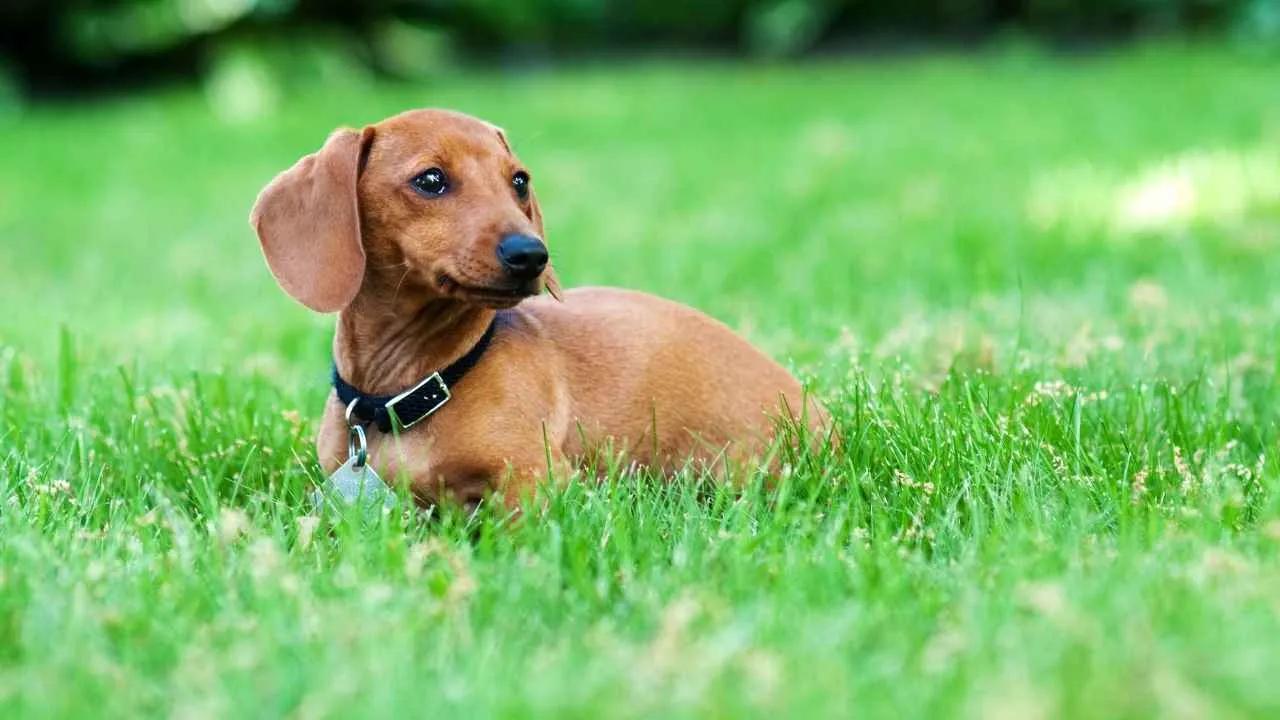
Dachshunds, originally bred in Germany over 600 years ago, were designed for hunting badgers and other small prey. Their unique body shape—long and narrow—was perfect for digging into dens and chasing prey.
This natural hunting instinct, paired with sharp claws and teeth, gives Dachshunds a fearless and assertive nature. This hunter’s spirit may sometimes be interpreted as aggression.
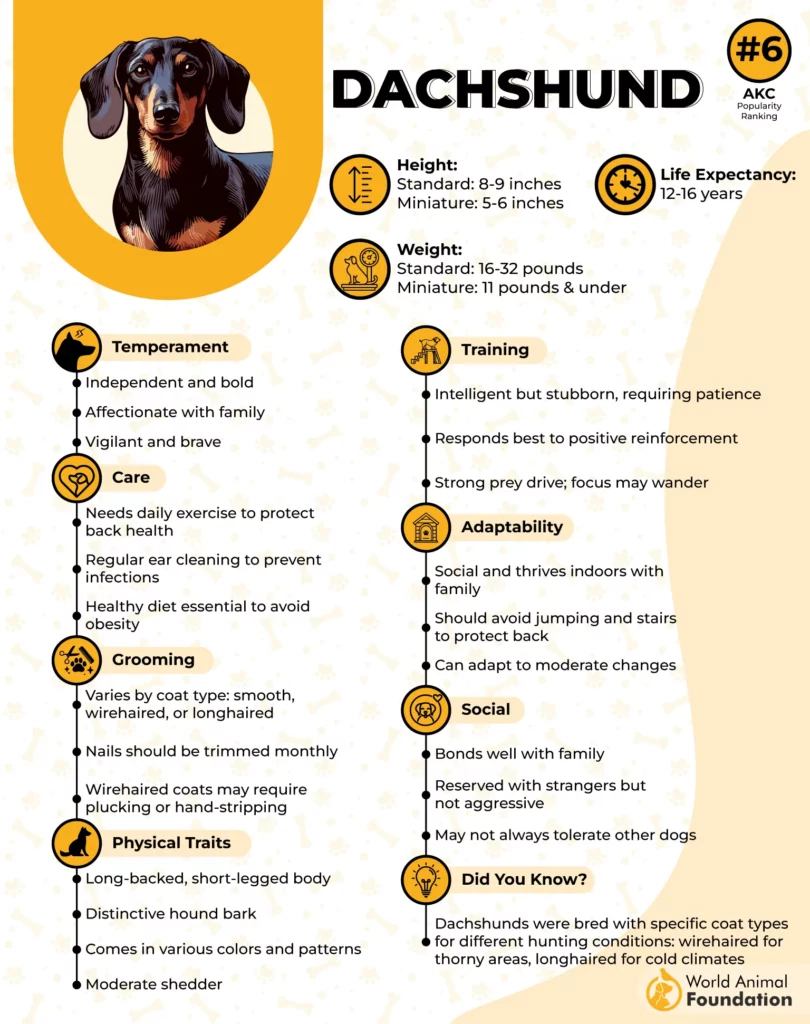
Reasons for Aggression in Dachshunds
Territorial Instincts: For my dachshund states that Dachshunds are naturally protective of their territory and their pack. They may show aggression toward strangers or unfamiliar animals to defend what they consider their home or loved ones.
Behavioral Aggression: Without proper socialization and training, Dachshunds can become territorial, showing aggression toward strangers, other animals, or even their owners.
Lack of Trust: Aggression can stem from a lack of trust or mistreatment. If a Dachshund feels unsafe or uneasy with its owner, it may exhibit defensive behavior, such as growling or biting.
Self-Defense: Dachshunds may become aggressive in self-defense, particularly if they feel physically threatened or hurt. Children need to be taught how to treat small dogs properly to avoid provoking them.
Proper training, early socialization, and understanding of their natural instincts are key to managing a Dachshund’s behavior and preventing aggressive tendencies.
5. Rottweiler
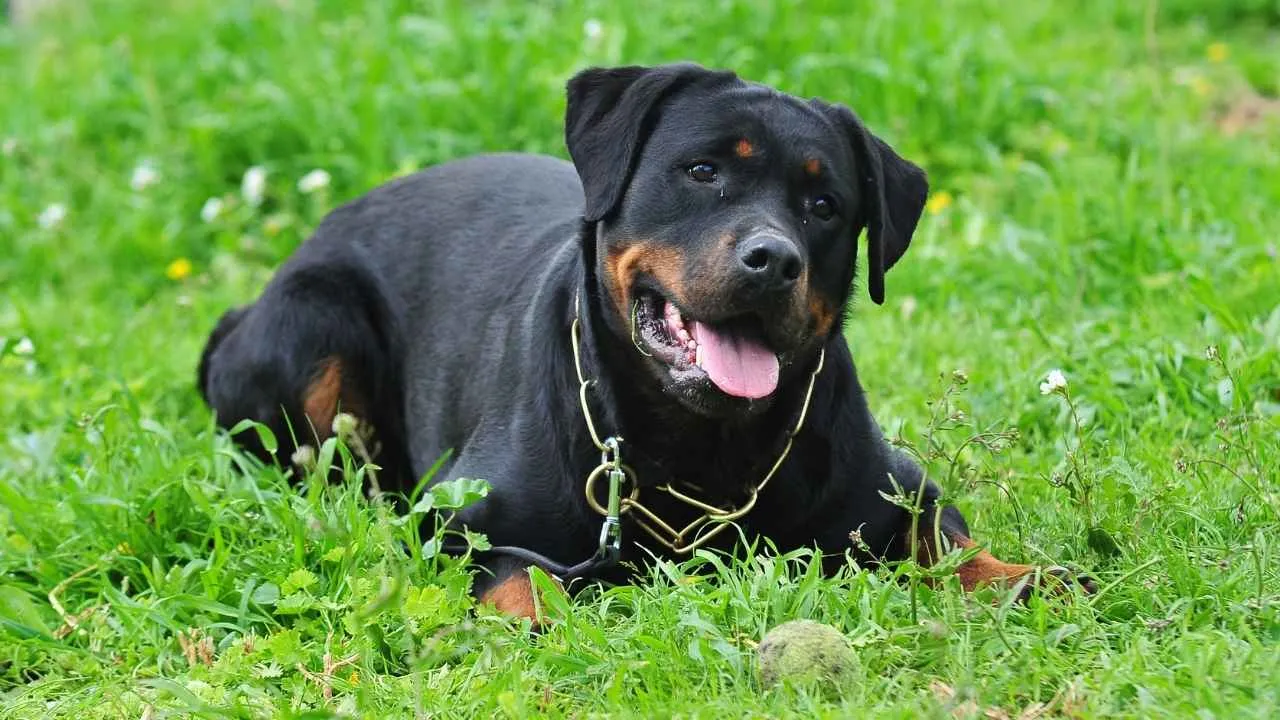
Rottweilers are powerful, intelligent working dogs with a deep-rooted instinct to guard and protect. Originally bred as herders and guardians, they remain confident and alert, often wary of strangers. While they are quick learners, Rottweilers can be strong-willed and may resist tasks they dislike.
With a formidable bite force of 328 PSI and the potential to reach up to 120 pounds, Rottweilers are often viewed as one of the more dangerous breeds, particularly in suburban settings. While loyal and affectionate toward their families, they may react aggressively toward unfamiliar guests. Their temperament is heavily influenced by their background as guard dogs.
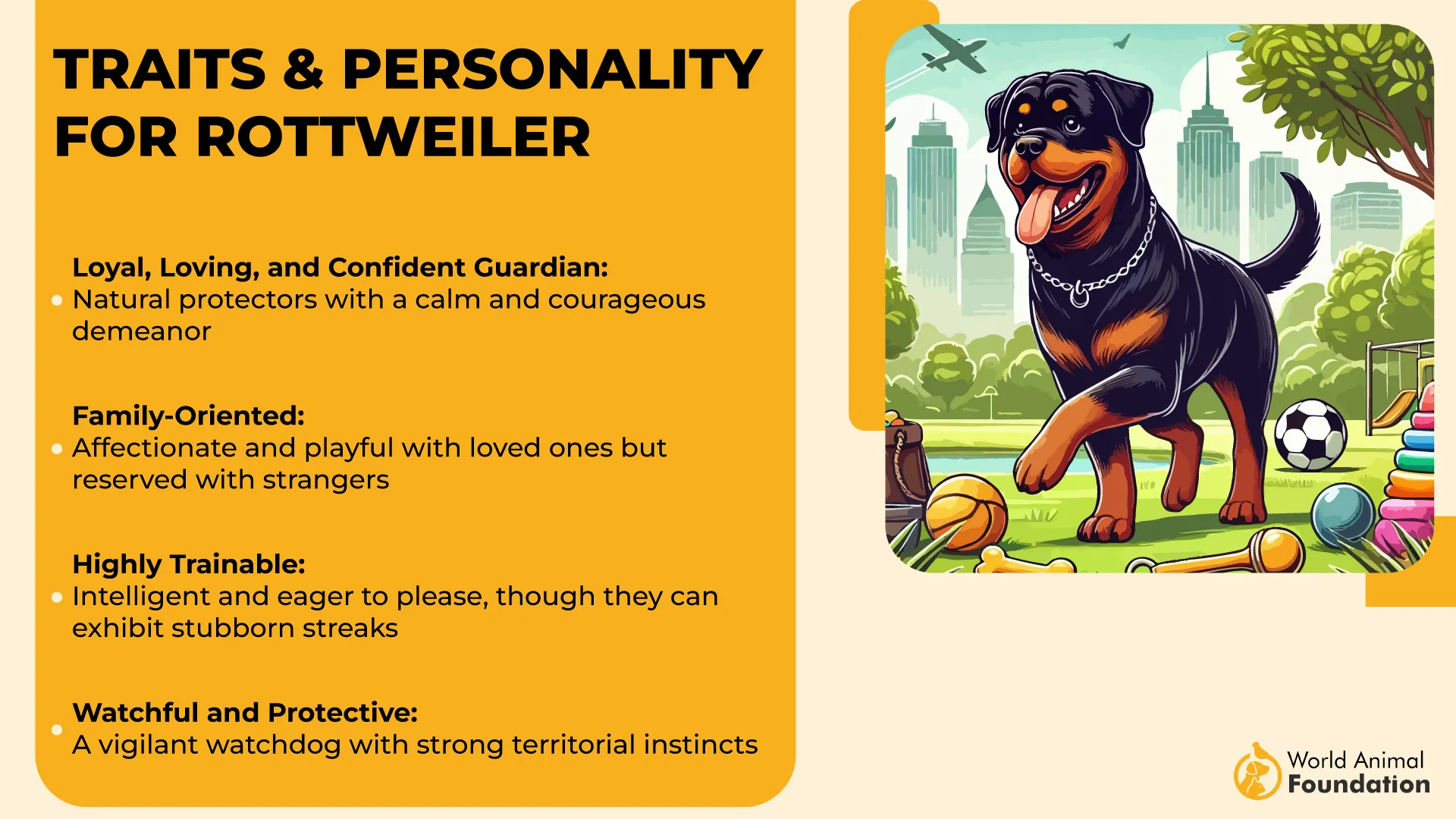
WebMD states that the ancient Romans also deployed Rottweilers in battle, relying on their bold and fearless temperament to intimidate opponents. This image later contributed to their reputation as an aggressive breed.
Rottweilers have a reputation for sudden aggression, and statistics show they are over ten times more likely to cause serious harm compared to many other breeds. While this may sound alarming, experts emphasize that dogs rarely act without cause — even if the reason isn’t obvious to us.
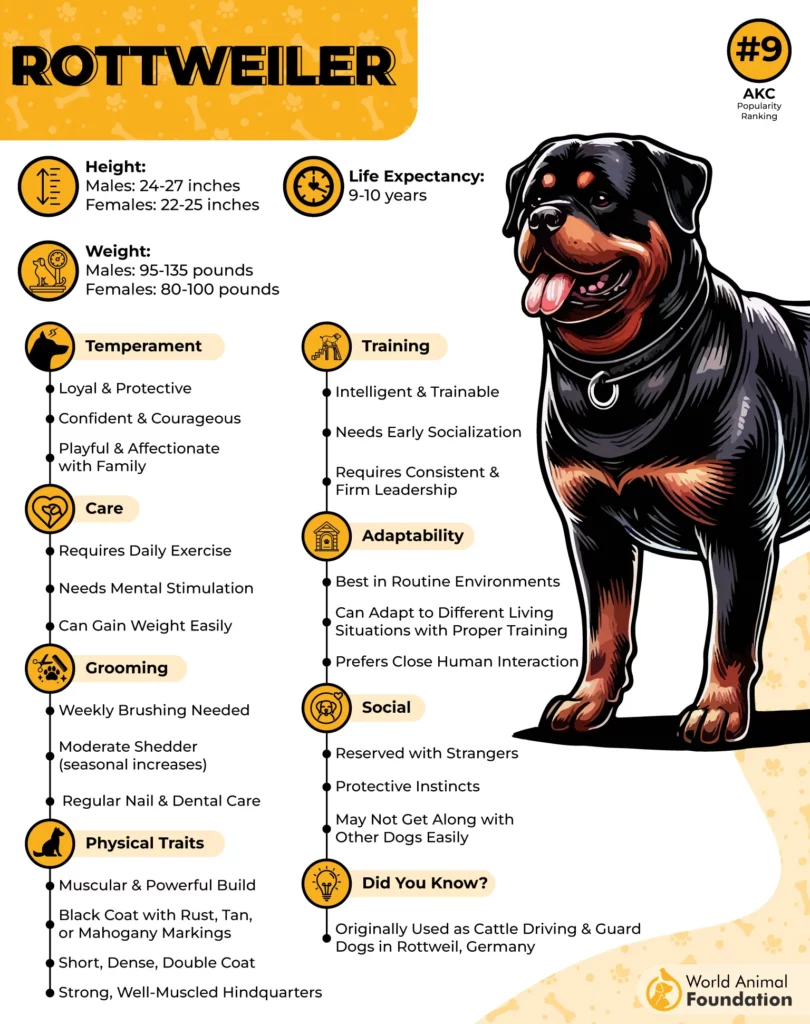
Common Triggers of Rottweiler Aggression
Perceived Threats:
Something harmless to humans — like a toddler on a tricycle — might appear threatening to an unexposed Rottweiler. If the dog believes it must protect its owner, it may respond aggressively to eliminate the perceived danger.Lack of Socialization:
Early and proper exposure to different people, animals, and environments helps Rottweilers understand what is and isn’t a threat. Without this, they may misinterpret everyday situations as dangerous.Feeling in Danger:
Dogs may act aggressively if they feel cornered or under attack, even when no harm is intended. This survival instinct is a form of self-defense common to both dogs and humans.Past Trauma:
Rottweilers from shelters may carry emotional scars. Negative past experiences can trigger fear-based aggression unexpectedly, especially if their new environment reminds them of previous trauma.
Ever heard of Black Dog Syndrome?
Rottweilers are often seen as dangerous dogs largely due to ‘Black Dog Syndrome’—a bias that causes black dogs to be unfairly viewed as more aggressive or threatening, regardless of their actual behavior.
6. Siberian Husky
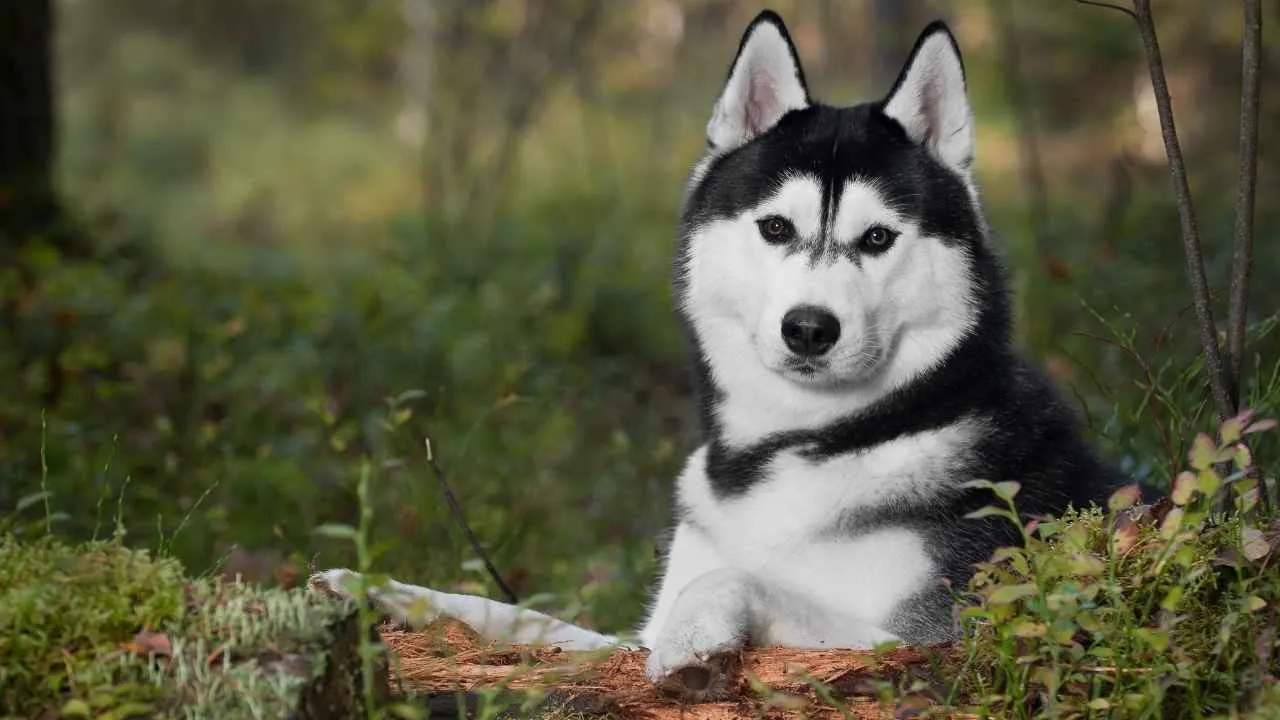
Siberian Huskies are known for their energetic, playful, and independent personalities. They are naturally friendly dogs, often welcoming strangers and coexisting well with other pets. However, their outgoing demeanor and lack of territorial instincts make them ineffective guard dogs.
Despite their sociable nature, their strong will and high energy can make it challenging for young children or elderly owners to handle them on walks or during training.
Aggression is a broad term and does not always imply violence. It can include a spectrum of defensive or dominant behaviors triggered by various internal or external factors. According to the ASPCA, aggression can arise from multiple causes and must be assessed on a case-by-case basis to understand the root issue.
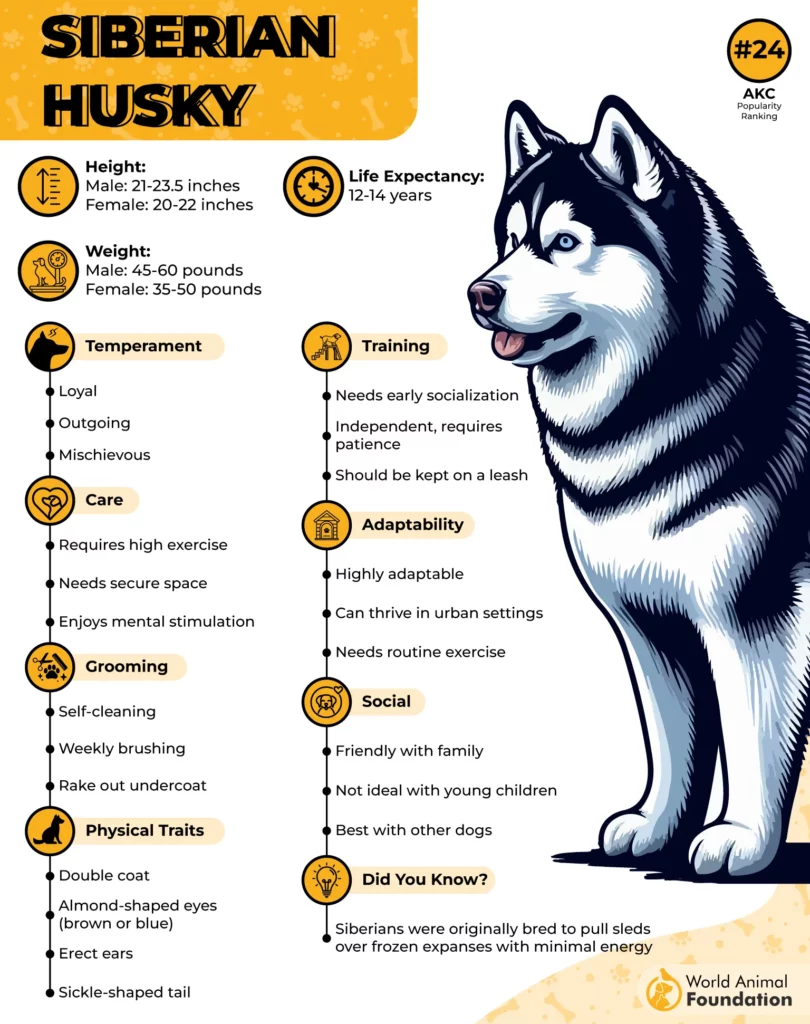
While not a naturally aggressive breed, Huskies‘ aggression typically manifests as growling, snapping, or biting when they feel threatened, anxious, or overly stimulated. It may also appear as resource guarding, dominance struggles with other dogs, or frustration from a lack of exercise or mental stimulation.
Understanding their individual needs and behaviors allows owners to raise a balanced, friendly, and well-adjusted companion.
Common Causes of Aggression
Lack of Socialization:
Without early exposure to other animals or varied environments, a Husky might view unfamiliar dogs as threats and respond defensively.Past Mistreatment:
Abuse or neglect can cause fear-based aggression as a form of self-protection. These dogs may need professional behavior correction and patient care.Insufficient Training and Exercise:
Huskies require consistent training and a structured routine. When their mental and physical needs aren’t met, frustration can lead to unwanted behavior.
By understanding their specific needs and tendencies, owners can foster a well-balanced and sociable Siberian Husky.
7. Doberman Pinscher
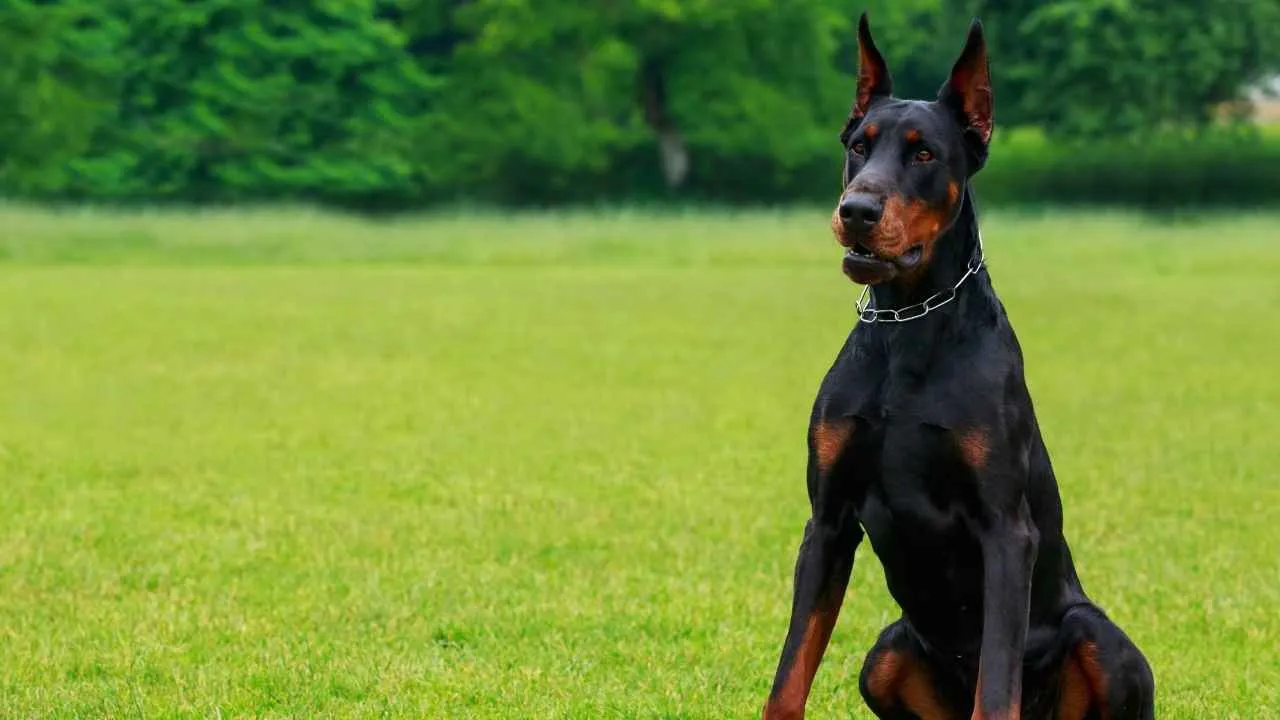
The Doberman Pinscher is a sleek, powerful, and highly intelligent breed often hailed as one of the most elegant and fearless protection dogs. They have an athletic build and striking appearance, including a glossy coat in black, blue, red, or fawn with rust markings.
Dobermans stand between 24 to 28 inches tall and carry themselves with grace and authority. Their wedge-shaped head and fluid, confident movements contribute to their regal reputation in the canine world.
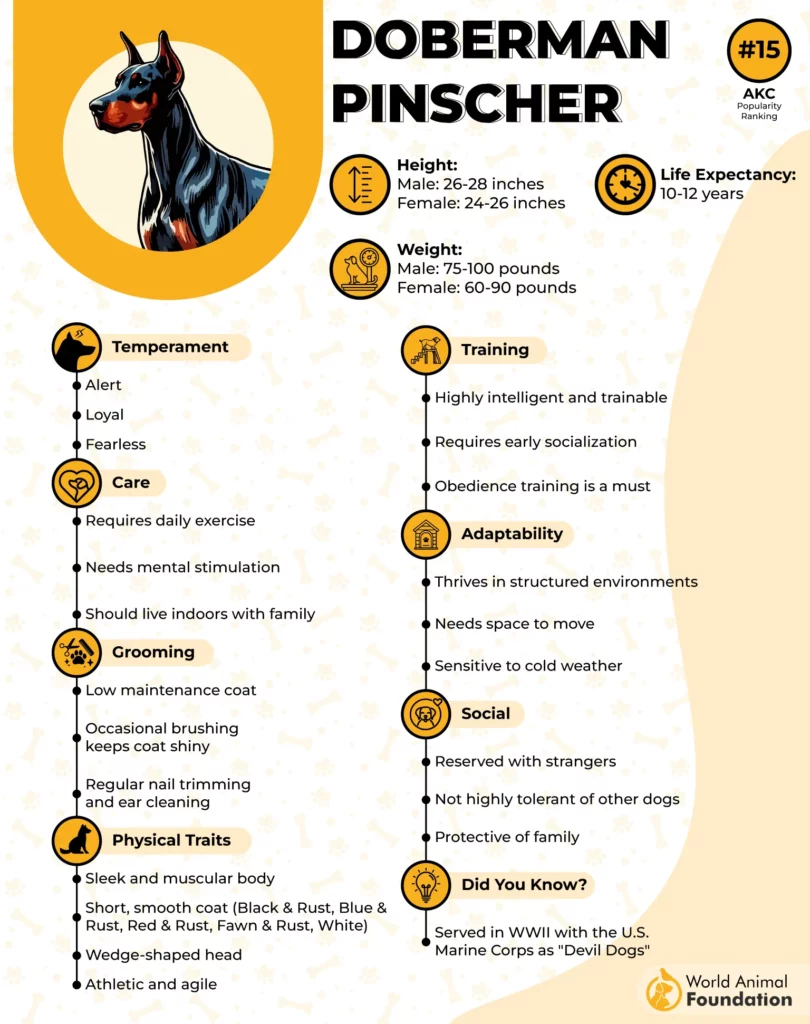
As noted by Britannica, Dobermans were originally bred for loyalty, intelligence, and versatility and to protect their owners and property. Over the years, this protective nature has sometimes been misunderstood as inherent aggression.
In truth, when properly trained and socialized from a young age, Dobermans are devoted and well-behaved companions.
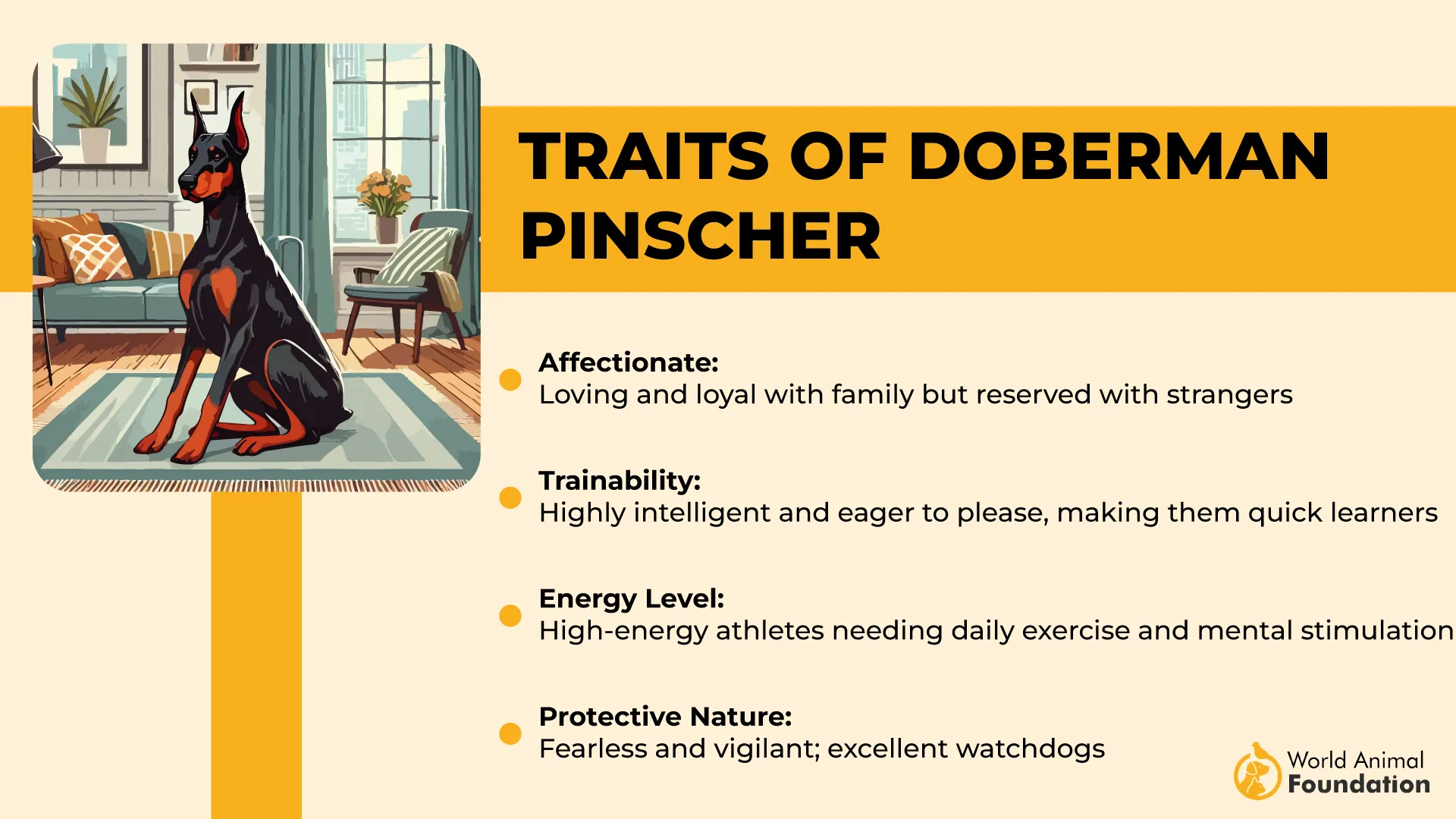
Potential Causes of Aggression in Dobermans
Dobermans may exhibit aggressive behavior under specific conditions, most of which are preventable or manageable with responsible care:
Lack of Early Socialization and Training:
Inadequate exposure to people, animals, and environments can lead to anxiety or fear-based reactions.Genetic Factors:
Some individuals may inherit a more reactive temperament. It’s essential to choose breeders who prioritize stable behavior along with physical health.Undiagnosed Medical Conditions:
Pain or discomfort from health issues can trigger irritability or aggression. A vet consultation is crucial if aggression appears suddenly without a clear cause.Perceived Threats to Family or Territory:
Dobermans are naturally protective and may become defensive if they sense danger to their loved ones or home.
When given consistent training, socialization, and health care, Dobermans are loyal protectors and affectionate companions. Understanding their instincts and needs is key to preventing behavioral issues.
Conclusion
While certain breeds like Chow Chows, German Shepherds, and Presa Canarios are often labeled as fighting dogs or aggressive protectors, it’s essential to understand that individual dogs vary greatly in temperament.
Factors like average weight, stiff posture, and natural guarding instincts may influence behavior. Still, with proper socialization, intensive training, and guidance from an experienced trainer, even the most misunderstood pup can become a loyal companion.
Whether you’re raising a puppy or managing an adult dog, the key lies in responsible ownership, not just labels. While breed-specific legislation aims to reduce risk, focusing on behavior rather than breed ensures that these loyal animals remain trusted family members.


